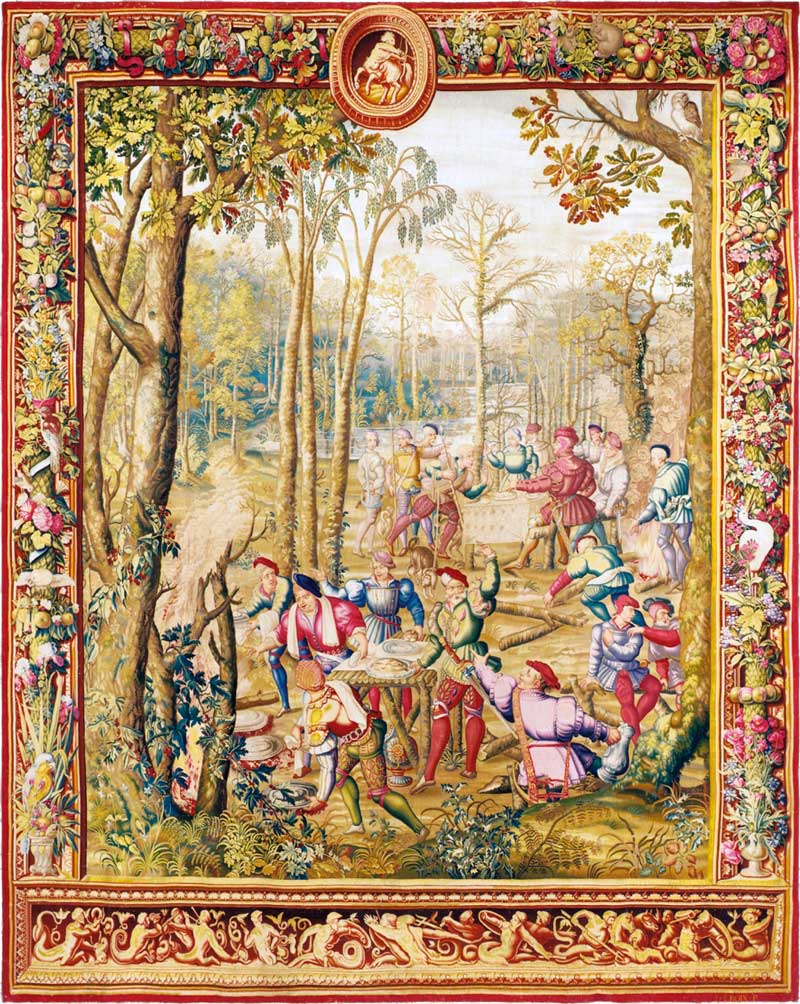Royal Manufacture Gobelins, France. Tapestry after Bernard Van Orley, Gobelins.
Provenance: Private collection
Condition: Exceptional quality
This tapestry illustrates two hunters in the foreground. Different figures seem to look at a prey, which indicated by their fingers pointing towards the left of the composition. In the middle ground, a scene of bivouac is distinguished with dogs playing, horses taking a rest and men discussing around the fire.
The border of the tapestry is richly decorated with motifs of the torus of laurels and the windings of flowers and fruits animated by birds attributed probably to Jean or Guillaume Tons. The upper part is decorated with a medallion symbolizing the sign of Sagittarius, while the lower part a frieze of triton in monochrome.
Gifted with a real talent for storytelling and designing, Bernard Van Orley is deemed as an innovator, conciliates harmoniously the Flemish tradition and new influences of the Renaissance, mainly those of Dürer and Raphael. He makes the best of his talent in the art of tapestry. People attribute to Van Orley – generally on the stylistic consideration – a great number of pieces woven in the Brussels workshops. The Hunts of Maximilian (Paris, Louvre), twelve pieces dating from 1528 to 1523, are considered as one of the masterpieces of tapestry.
The tapestry is part of the royal commission executed between 1704 and 1706 in the Gobelins Manufactory for Louis XIV. This series of twelve allegorical tapestries representing hunting scenes was designed originally by Bernard Van Orley between 1528 and 1533. The scenes take place in the forest of Soignes, a hunting-ground of the Emperors near Brussels. Nothing evokes better an epoch where hunting is one of the favorite hobbies than the tough and elegant hunting life.
This first series realized for Charles V or Mary of Hungary was mentioned in 1589 in the inventory of Henry of Lorraine, Duke of Guise. It was kept in the hôtel de Guise until 1654. Another version was commissioned in 1704 and accomplished in 1708 with twelve tapestries woven in the workshops of Etienne le Blond and Jean de la Croix.
It is signed at the lower right L.CROIX.P
It is an extremely rare piece owing to its prestigious provenance (Louis XIV).
